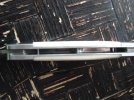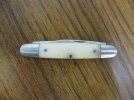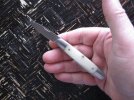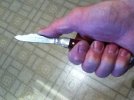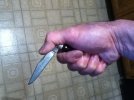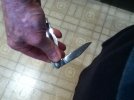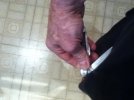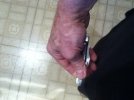Don't file, don't dremel, don't punch. These things might work... if you know what you are doing... if you are lucky. The simplest, foolproof fix is to cut some soft-ish material (I prefer synthetic wine cork), thick enough to wedge between the scales, and place it where the blade will impact against it rather than the spring. Messing with the kick just invites other problems. Grinding on the backspring... yeah, not a good solution. The wine cork is cheap, easy, works, and doesn't alter the knife in any way. Do it once, you forget it's ever there, and your knife acts like a folding knife should.
I have Case, GEC, etc knives that do this. I even have one Case with an edge that rests on the back spring (now this kind of workmanship pisses me off). Sadly there are no brands that are immune. Some design configurations may be, but not brands. Can happen to slipjoints, can happen to lockbacks. Breaks your heart. There are a very few traditional designs out there that employ a some kind of a stop pin, independent of the back spring, that will prevent this from happening. As far as I know, this is a relatively recent innovation seen here and there. I've only seen this on some A.G.Russell knives and some that would not qualify as traditionals here, but would suffer the same problem for the same reasons were it not for the stop pin.
I have Case, GEC, etc knives that do this. I even have one Case with an edge that rests on the back spring (now this kind of workmanship pisses me off). Sadly there are no brands that are immune. Some design configurations may be, but not brands. Can happen to slipjoints, can happen to lockbacks. Breaks your heart. There are a very few traditional designs out there that employ a some kind of a stop pin, independent of the back spring, that will prevent this from happening. As far as I know, this is a relatively recent innovation seen here and there. I've only seen this on some A.G.Russell knives and some that would not qualify as traditionals here, but would suffer the same problem for the same reasons were it not for the stop pin.

